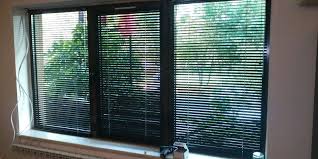PVC carpentry often known as PVC joinery or PVC woodworking, has acquired significant reputation recently due to its overall flexibility, longevity, and artistic attraction. This article strives to provide a thorough breakdown of PVC carpentry, addressing its features, pros, software, and upkeep demands.
Highlights of PVC Carpentry:
PVC carpentry (tamplarie pvc) is a man-made plastic-type material polymer commonly used in a variety of apps, which includes building. PVC carpentry necessitates the fabrication of entrance doors, windows, cupboards, and other furnishings using PVC materials.
Key highlights of PVC carpentry incorporate:
Longevity: PVC is highly durable and resistant to rot, corrosion, and termites, rendering it well suited for both indoor and outdoor apps.
Lower Maintenance: Contrary to traditional timber, PVC requires minimal servicing. It does not need artwork, yellowing, or sealing and can be easily cleaned out with soap and water.
Climate Resistance: PVC is conditions-resistant, rendering it suitable for use in regions subjected to sunlight, rainwater, and humidness without deteriorating.
Overall flexibility: PVC can be easily shaped into different styles and sizes, allowing for personalized styles to accommodate diverse design styles.
Vitality Productivity: PVC user profiles employed in windows and entrance doors supply superb thermal insulation components, adding to energy financial savings by reduction of cooling and heating expenses.
Advantages of PVC Carpentry:
There are numerous advantages to selecting PVC carpentry over standard components like wood or aluminum:
Expense-Usefulness: While the preliminary value of PVC carpentry can be more than wood, it offers long-term saving money for its durability and reduced servicing specifications.
Ecological Sustainability: PVC can be a recyclable substance, and lots of producers offer you re-cycled PVC possibilities, so that it is an eco-friendly choice.
Style Flexibility: PVC carpentry allows for intricate patterns and details, supplying architects and homeowners better design and style flexibility.
Improved Safety: PVC entrance doors and windows often include multiple-position sealing systems, improving safety and providing reassurance.
Disturbance Lessening: PVC information with soundproofing capabilities help lessen additional sound, developing a less noisy and much more comfortable indoors environment.
Applications of PVC Carpentry:
PVC carpentry finds prevalent apps in residential and commercial construction jobs:
Entrance doors and Windows: PVC entrance doors and windows are normally employed in residential buildings, workplaces, and commercial businesses because of their durability, power efficiency, and visual attraction.
Units and Home furniture: PVC individual panels and panels are used inside the manufacturing of cabinets, wardrobes, and household furniture sections, giving an advanced and trendy replacement for classic hardwood.
Cladding and Fencing: PVC cladding and fencing present an attractive and low-servicing solution for exterior wall structure covers and house restrictions.
Repair of PVC Carpentry:
When PVC carpentry requires little routine maintenance in comparison with hardwood, standard cleaning is essential to protect its visual appeal and satisfaction. Just wiping the types of surface having a gentle soap and water solution using a gentle material or sponge is normally ample to remove grime and dirt. Stay away from abrasive cleansers or chemicals, as they possibly can injury the PVC surface area.
To conclude, PVC carpentry offers quite a few positive aspects over standard components, rendering it a favorite selection for contemporary building projects. Its longevity, very low upkeep specifications, and artistic appeal make it a versatile choice for entrance doors, windows, home furniture, and various other software.
